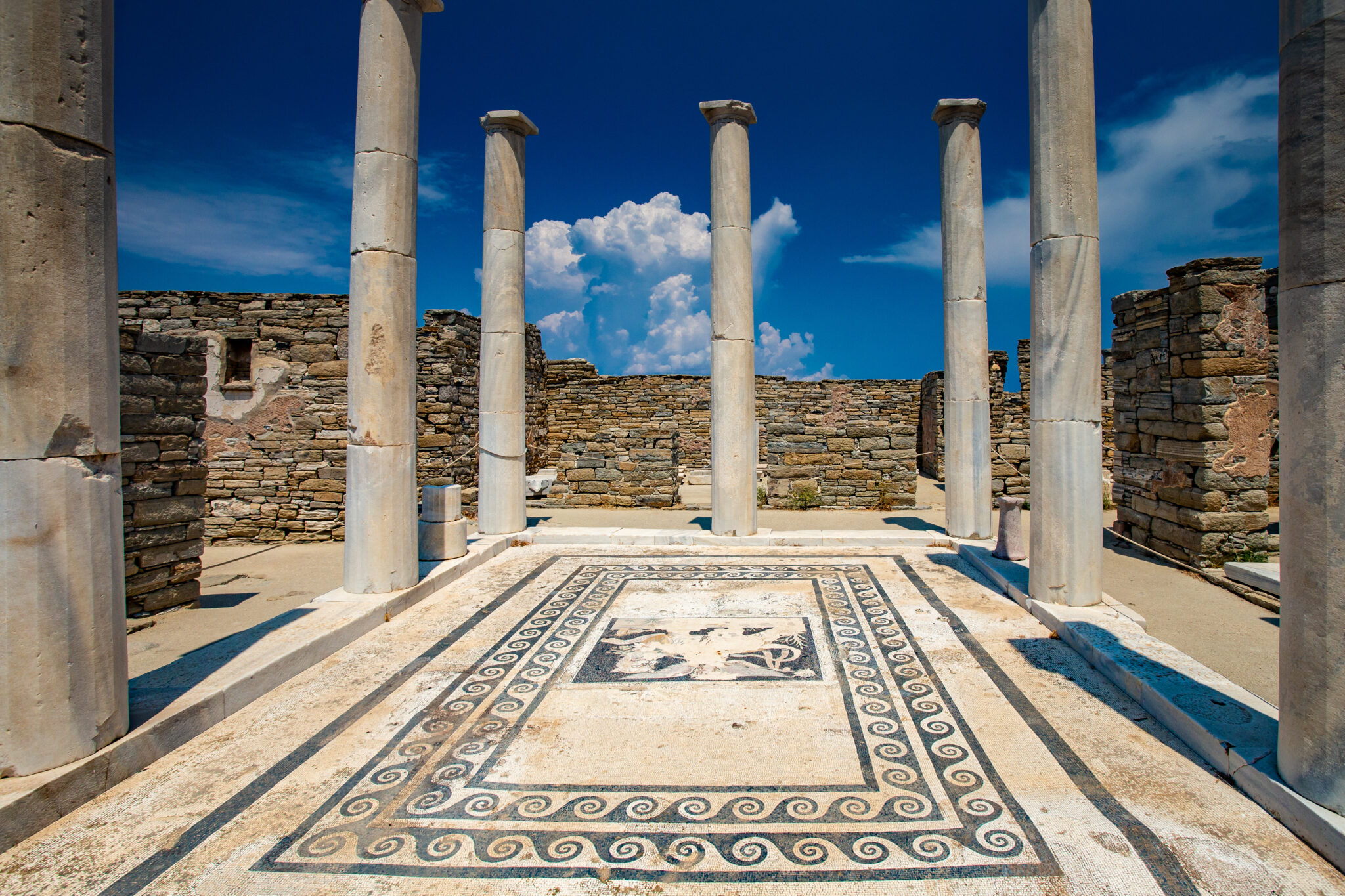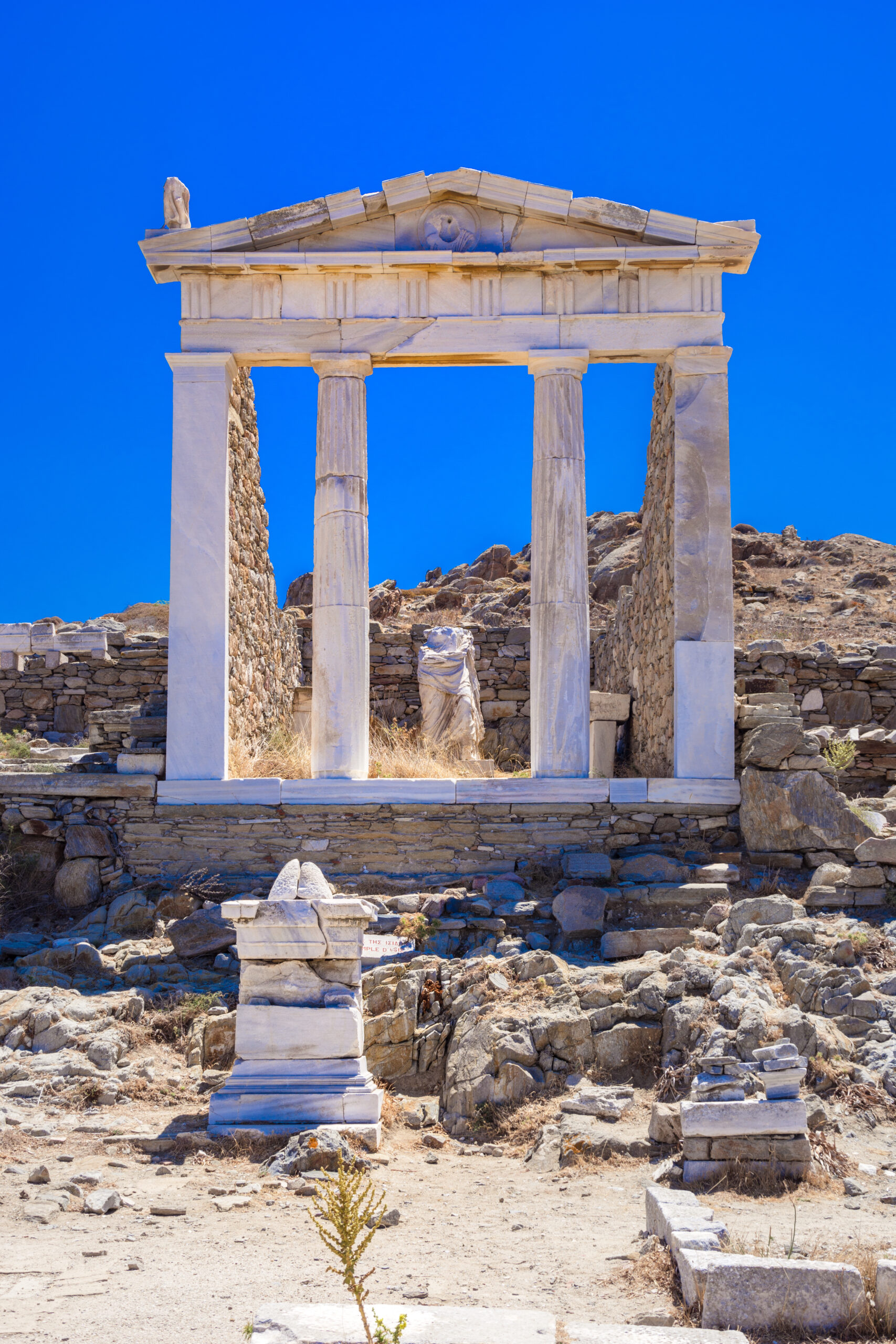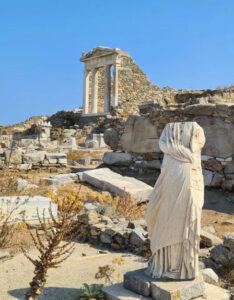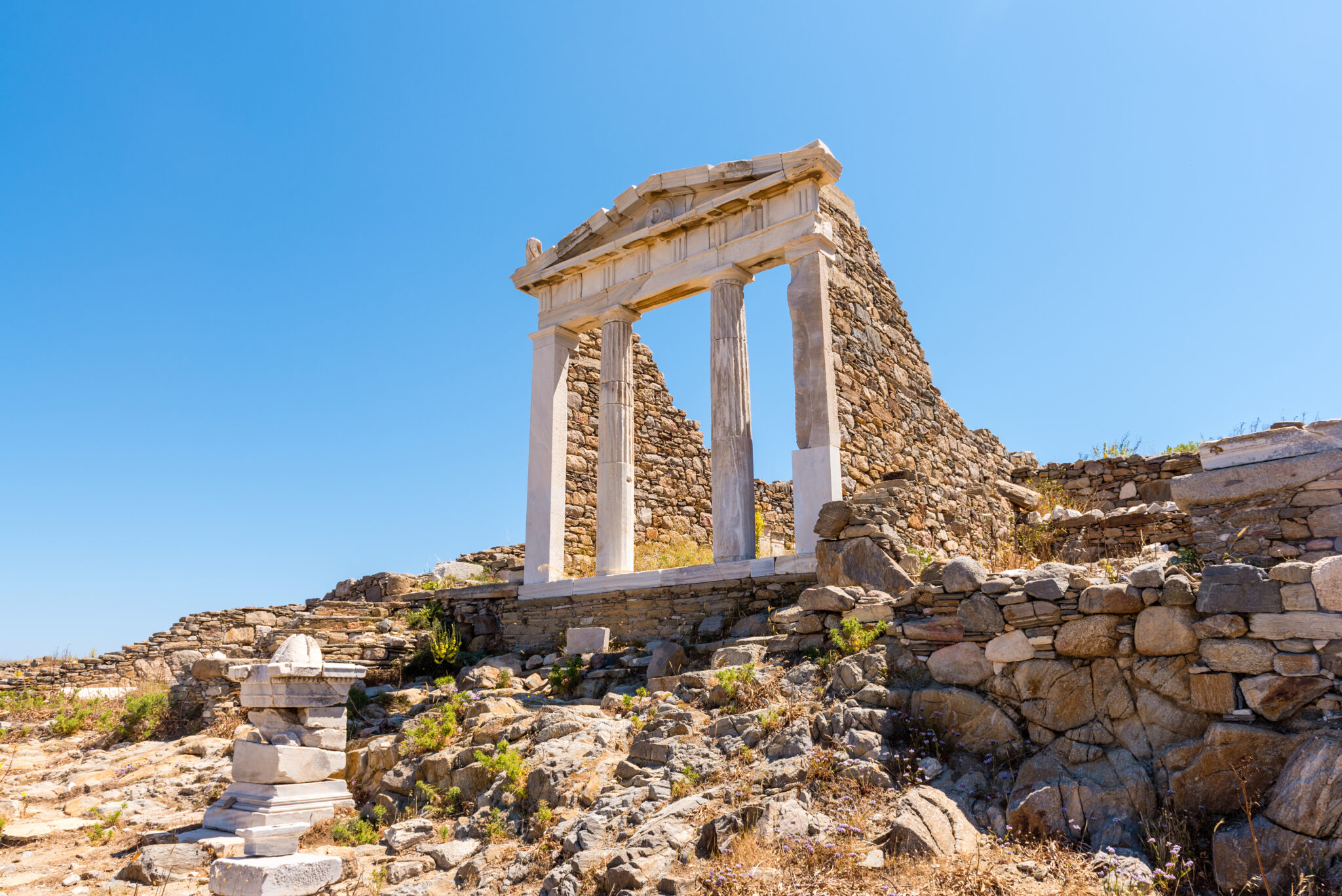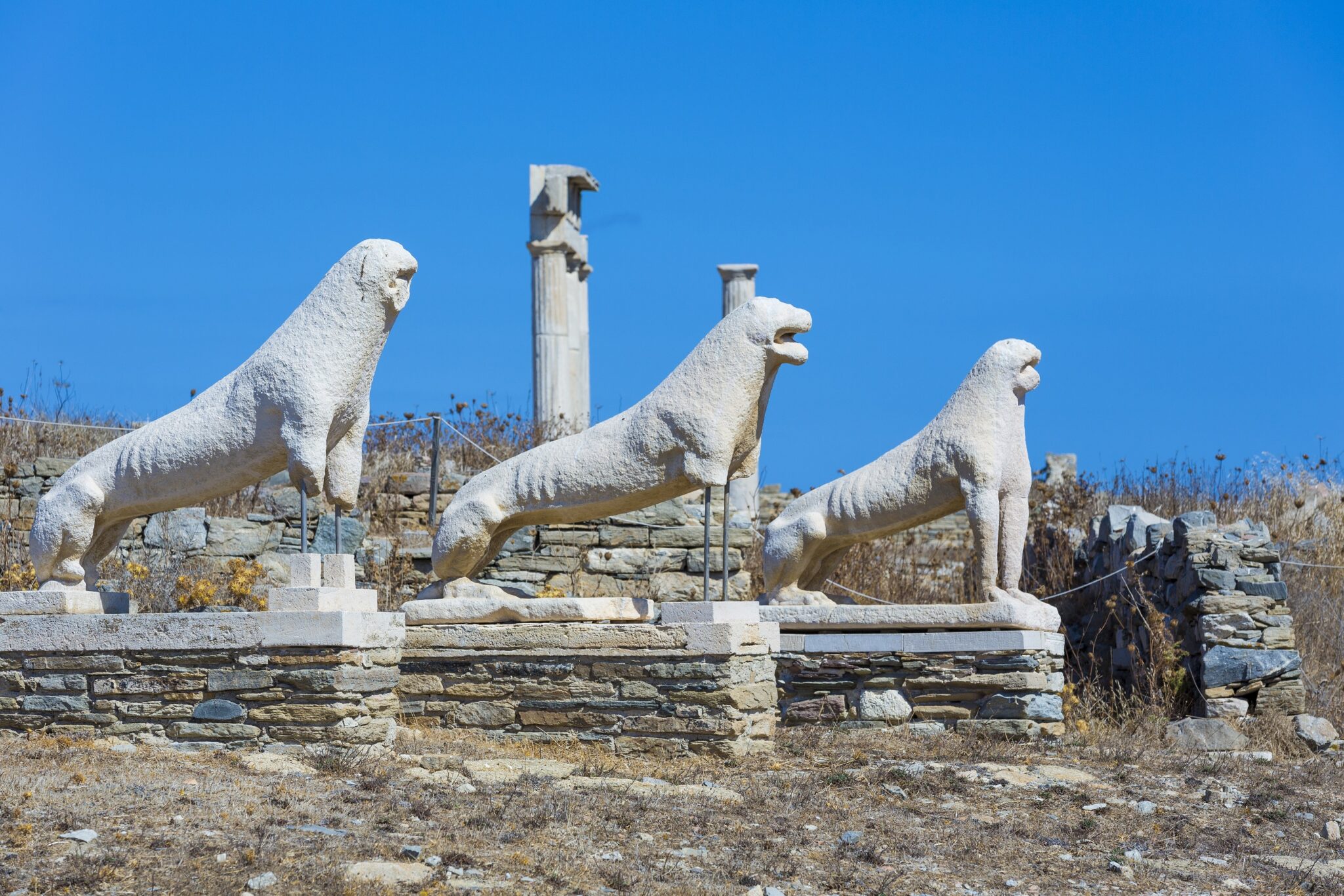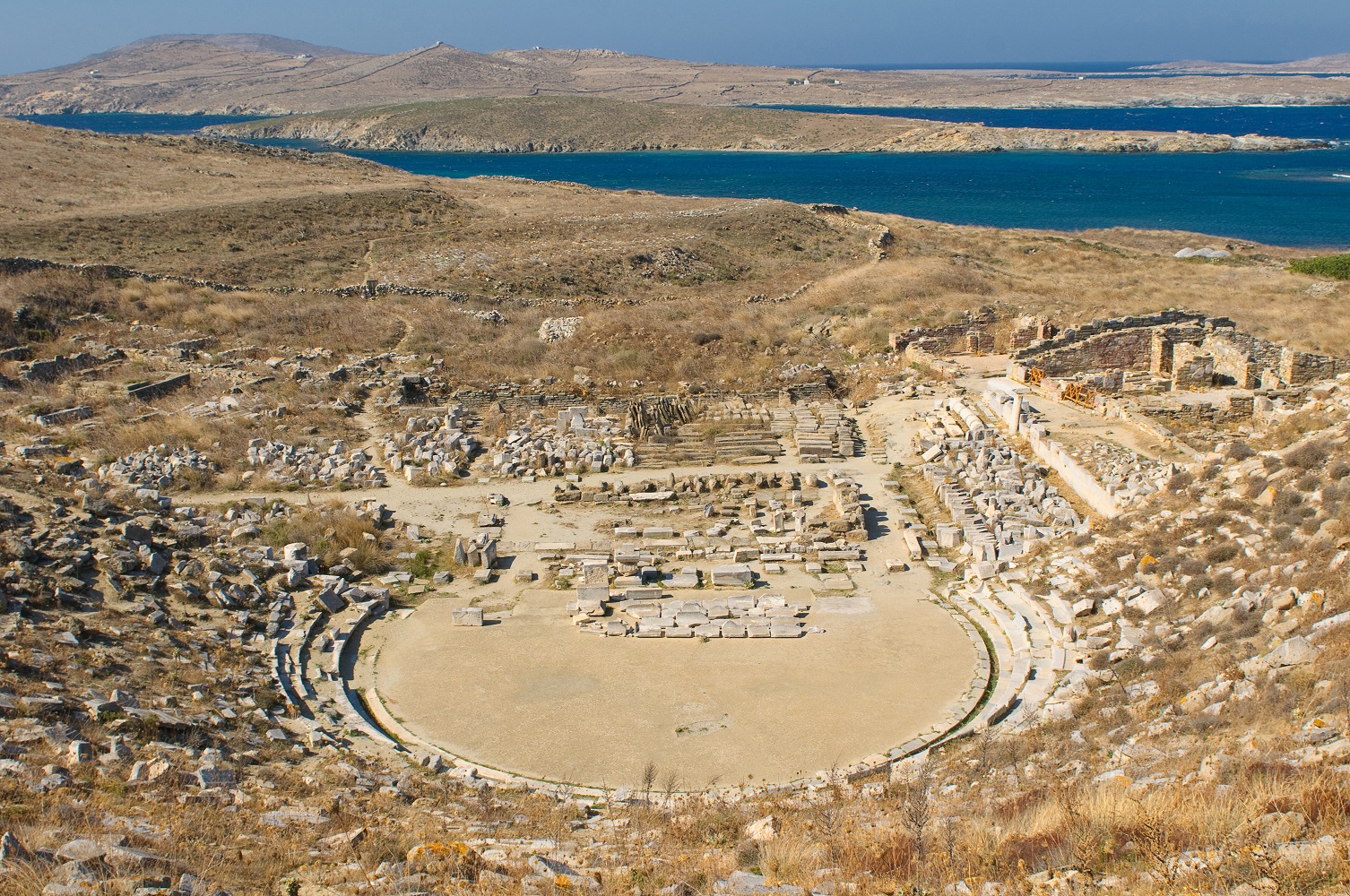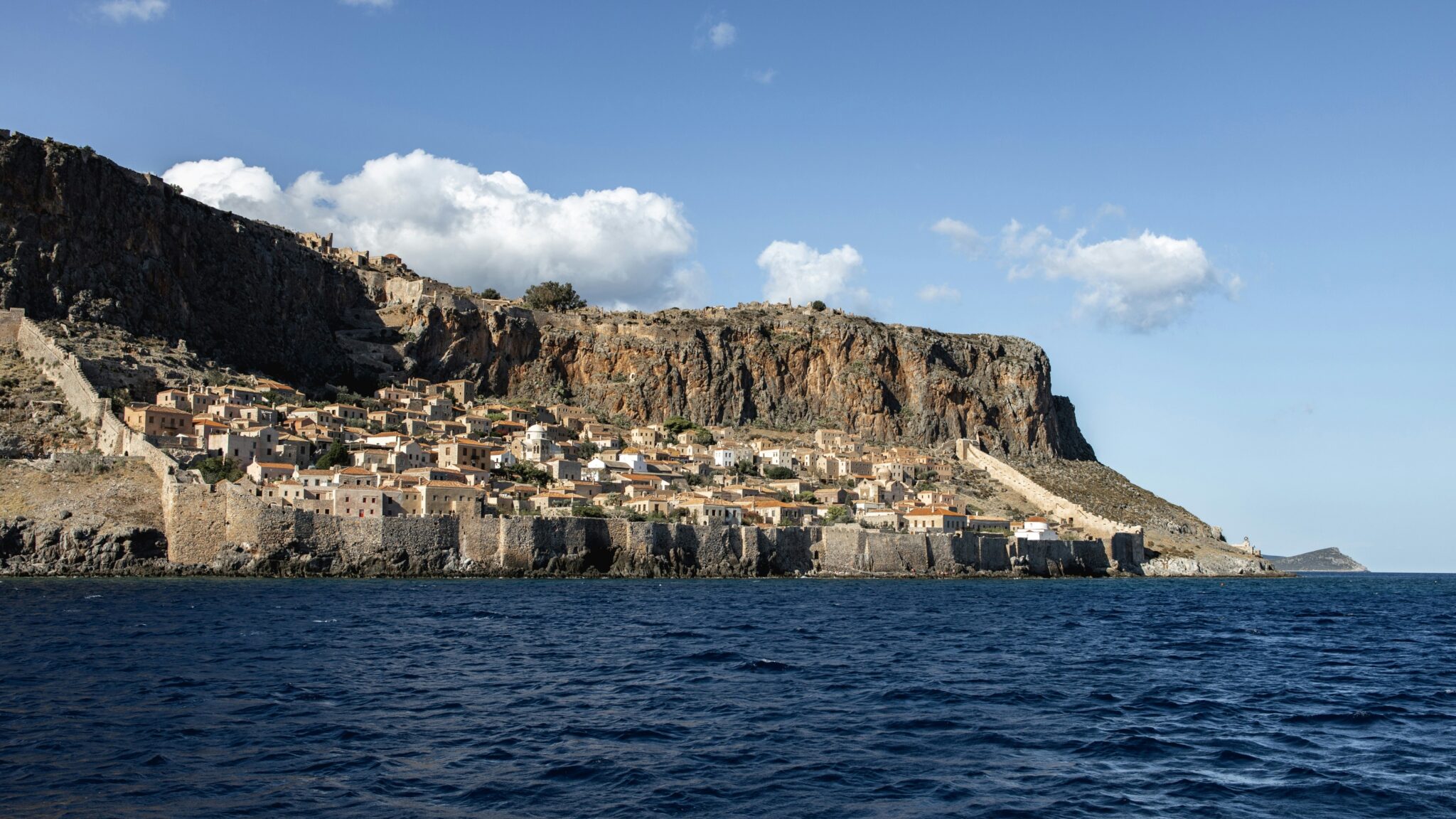Zeus, father of the gods and unfaithful chancer, mated with Leto, daughter of Titans Koios and Phoebe. His wife Hera, furious at the betrayal by Leto, banished her from Olympus and forbade any land on earth to give her shelter. Leto wandered the world seeking a place to give birth but no one would help her, fearing the wrath of Hera. Zeus saved her by sending the north wind Boreas to carry her out to sea and he asked Poseidon to give Leto refuge. The god of the sea immobilized an invisible floating island at the centre of the Aegean. Anchored to the seabed with four diamond chains, the island went from being Adilos (invisible) to Delos (visible).
Leto first gave birth to Artemis, but the labour of Apollo lasted 9 days and the agony of the pregnant woman was drawn out as Hera had kidnapped Eileithyia, the goddess of childbirth, and Artemis helped to deliver her twin brother as their mother leaned against a palm tree . As Homer recounts, the birth was particularly impressive – a brightness spread over the island and the gods and goddesses who had assembled by Leto were dazzled. Immediately a multitude of swans flew over the lake of Delos and the barren land blossomed. The island became sacred, bathed forever in the light of Apollo, and Leto promised to make Delos the richest place in the world.
Excavations show that Delos was inhabited from the 3rd millennium BC with traces of circular huts found on the top of Mount Kynthos. During the Mycenaean era, and especially in the period 1580-1200 BC, Delos had a settlement on the plain near the port. Later, as in the rest of the Cyclades, the Ionians settled there. During the Geometric period, the island developed considerably; from 700 BC there are references in Homer to the Ionian Sanctuary of Apollo and over time it gained in prestige and respect and the Ionian cities dedicated rich votive offerings to it. Delos was celebrated every four years with competitions, theatre, symposia, music, and in the ancient world they were second only to the Olympics and the Pythian games. Thucydides reports that the tyrant of Samos, Polycrates, gave Delos the neighbouring island of Rhineia in 525 BC, connecting the two islands with a large iron chain to emphasise its association with the home of Apollo.
Later the Athenians, flourishing as a naval superpower, showed great interest in Delos. In 478 BC, after the end of the Persian wars, the Delian League was founded to protect the participating cities from future attacks. The treasure of the alliance was kept in the temple of Apollo on Delos, administered by the Athenians, and thus the island was for the first time at the centre of ancient Greek history. However, in 454 BC the treasure was transferred by Pericles to the well-protected Acropolis of Athens rather than vulnerable Delos, signalling that power was being consolidated into a new Athenian empire. Nevertheless, the plague that broke out in the city during the Peloponnesian War was attributed to Apollo’s revenge for the Athenians’ attitude, and so in 426-425 BC Delos was cleansed in a great catharsis; all the tombs were excavated and the bones of the dead and the grave paraphenalia were transported to neighbouring Rhineia.
From then on, burials and births were forbidden in Delos as both were seen to pollute the sanctuary. Later, the Delians, unable either to give birth or to be buried on their island, accepted exile from the Athenians who, in a further act of purification, deported them to Adramuttium in Asia Minor, where most of them were killed by the Persians.
After the cleansing, the Athenians established a festival where every 5 years they sent a sacred ship with offerings to Delos. They completed a magnificent temple to Apollo of Pentelic marble and another of limestone which housed an extravagantly large statue of the god. It was during this period that the rulers of the Hellenistic states, as a show of power and wealth, offered money to build many important structures in Delos.
During the reigns of Philip and Alexander the Great, Delos was freed from Athenian guardianship and in the period 314-166 BC the island prospered in its independence. Ideally located for the transport of goods to Asia Minor and Egypt, it came under the control of the Romans from 167 BC onwards. Declared a free port without customs duties in an attempt to destroy trade in Rhodes, as an inscription says, Delos became ‘the greatest commercial centre of the world’. Rich merchants from Rome, Athens and all over the Mediterranean settled on the island and unimaginable wealth and opulence flooded the once holy island. Bankers and other tycoons lived a glorious and dissolute life and up to 750,000 tons of merchandise passed through its ports and around the turn of the first century BC 25,000 people lived on Delos. The historian and geographer Strabo says that at that time up to 10,000 slaves could be sold every day on the once sacred isle.
As is always the case in history, the cycle of prosperity had to come to an end, followed by years of decline. Loyal still to Rome, Delos was attacked by the Pontian king Mithridates in 88 BC, his fleet destroying and sacking the island, slaughtering 20,000 people in a single day. In 69 BC, Cilician pirates led by Athenodorus, an ally of Mithridates, swept away what remained of the island. In early Christian times Delos became the seat of a diocese of the Cyclades which included the islands of Kea, Kythnos, Mykonos, Syros, and Serifos, while in 1326 a detachment of the Knights of St John settled there in an attempt to fight piracy. Conquered by the Turks in 1566, Delos, known as Sdili, once again became a haven for pirates and its ruins were appropriated as a first-class source of building materials for the islanders.
In 1445 Cyriacos of Ancona, considered one of the first archaeologists, visited Delos, and from the 17th century onwards European historians came and explored the ruins of the once glorious ancient city. In the 17th century one of the emblematic lions of Delos was purloined for the Arsenal of Venice, while other antiquities were smuggled to Rome and England.
The French Archaeological School began excavations in 1873. From then until the present day, sanctuaries, theatres, statues, and rich houses with mosaics and frescoes have been uncovered, proving how important the civilization that developed on the island of Delos was. The most important discoveries were made between 1904 and 1914, when the excavations were directed by M. Holleaux and financed by the Duke de Loubat. Photographs were syndicated around the globe and the island again captured the imagination of a watching world.
Read also:
Delos: An island-landmark, one of the most important archaeological sites in Greece
Guided Tours: Discovering Mykonos’s Hidden Gems



